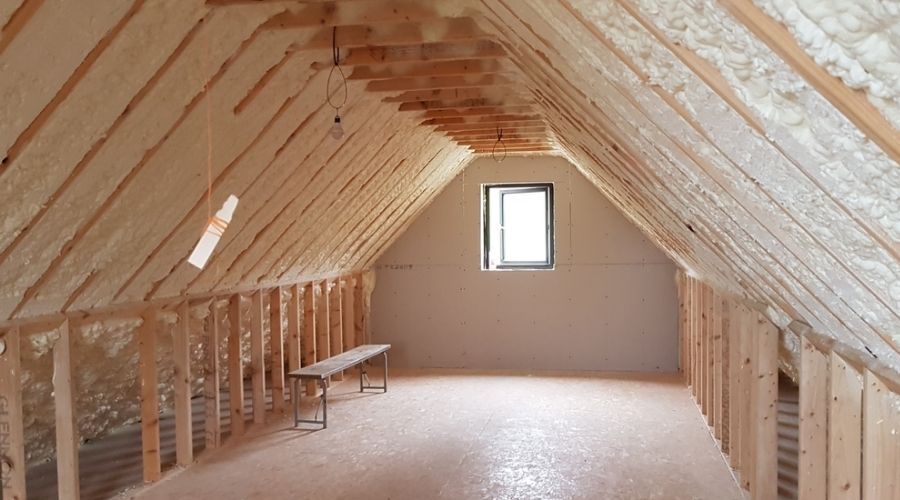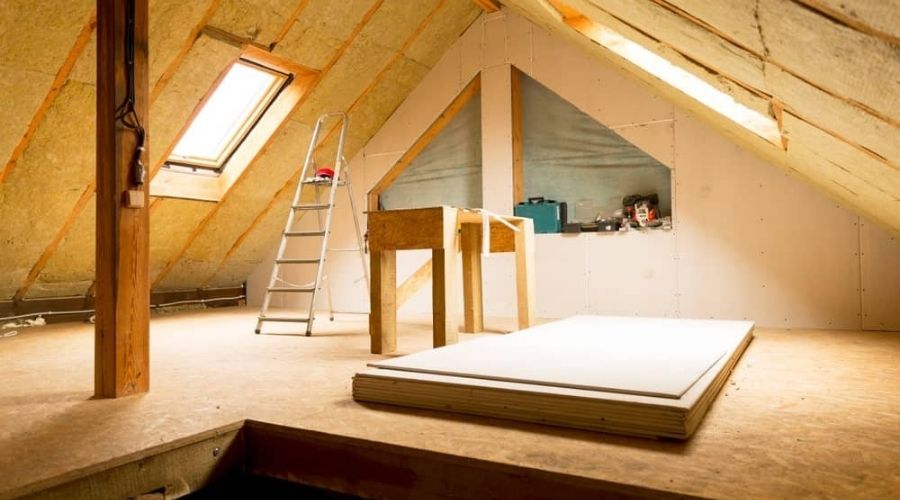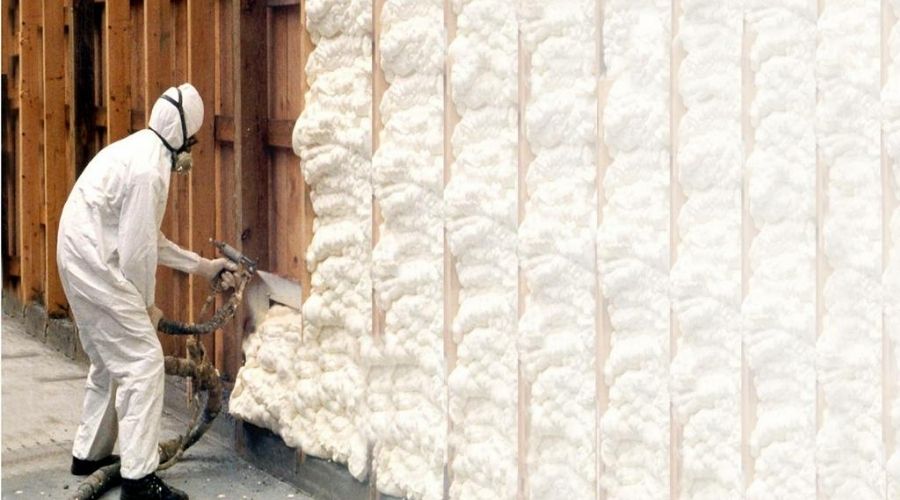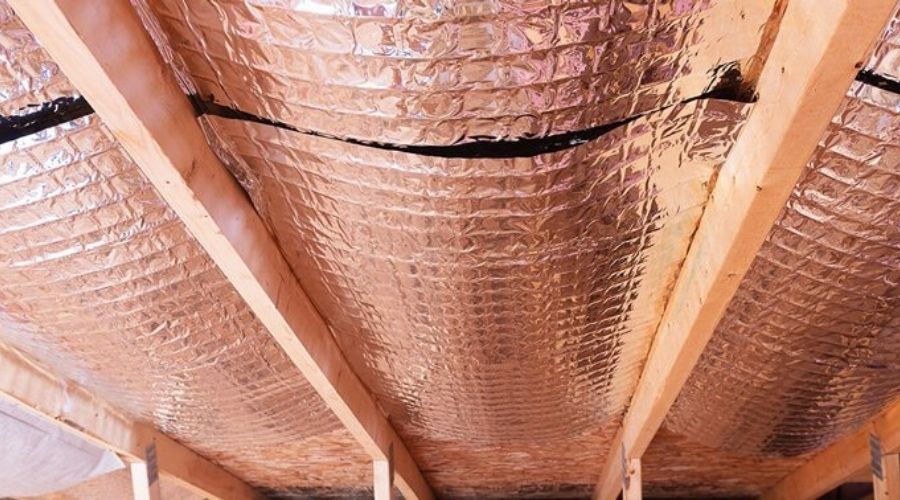
We often look for ways to save a few bucks on heating and cooling costs. The energy cost is integral in any household and always adds to the household expenditure.
It goes beyond ensuring you feel warm during those late cold nights that you might be working on your important project in the garage. However, most people still question the benefits attached to the garage ceiling’s insulation.
Should I insulate my garage ceiling?
Yes. If you want to reduce the costs you spend on energy, one important step you should take is to focus your energy and time on insulating the attic space over your garage ceiling. Apart from the reduction in energy bills, insulating your garage ceiling also makes it usable.
Well, most folks let their garages sit cold and unused during winter. However, if you engage in a comprehensive insulation program, raising the temperatures inside your garage will make a huge difference and bring the entire garage back into the fold of usable space.
Amazing! Right?
Also Read:
Garage Ceiling Insulation Process
Purchasing the Supplies You Need
The first and most profound step is purchasing the right supplies. Be sure to have all the supplies you need before starting this project.
Inspect your ceiling
You can do this by measuring ceiling joists using a ladder and measuring tape to ensure you have an ample amount of insulation. You can measure out the depth, width, and height of your joists. If you have unusual ceiling joists, you can always make cuts to compensate for those. Similarly, repair any ceiling damages before starting your project.
Purchase insulation based on R-Value needed for your location
As stated above, always be sure to purchase insulation that is appropriate for your needs. Such needs include a combination of the depth of joists and your geographical location. If you’re in a colder location, the highest you can shoot for is R30, and the lowest may likely be around R13. While most garages have pretty thick joists, be sure to cover up for any potential gaps.
Using Friction and Staples to Install
Once you’re done with the purchasing selections, you can start the installation process. Here, you can use a ladder or perhaps rent a scaffold at some hardware stores. Similarly, you may also opt to use fiberglass batts, which is considered the easiest insulation method.
Cover the fiberglass batts with drywall
Lastly, you’ll need to cover the fiberglass batts with drywall. This is because they are a potential fire hazard if left exposed. Drywall is crucial to fill in all of the gaps on your ceiling. Should some space fail to fit precisely, you shouldn’t be afraid to cut through the drywall with your utility knife. You can begin with one corner of the room and then wrap your way around to keep track of where you began. Also, ensure the outside edges of your drywall connect correctly to each stud.
Potential effects and the need to insulate the garage attic
Undoubtedly, most home’s heating and cooling systems usually don’t extend into the garage. As such, insulating your garage ceiling does little to change the system’s cost and keep temperatures in the garage a bit more stable. So, if your home’s HVAC system doesn’t extend into your garage, insulating your garage ceiling will serve the function of keeping hot or cold air inside the garage as it does for the rest of the home. If your garage is your favorite zone, insulating it may also improve your comfort.
Garage Insulation
Insulation types
Although there are multiple types of insulation, big box stores would have you believe otherwise. However, here are the common types.
Batts and rolls

Commonly referred to as blanket insulation, this type of insulation is seen in batts or rolls. A roll of insulation comes wrapped up like a Fruit by the Foot, while batt insulation is pre-shaped and cut rectangular.
This insulation type costs between $0.80 to $1.00 per square foot. The difference in the prices results from material type, brand, thickness, and the insulation’s R-value.
The primary difference between the two types of insulation, batts, and rolls is that the latter is rolled out between the ceiling and the wall framing while the batts get installed in pieces. Also, insulation by rolls minimizes the chances for gaps between sections, unlike with the batts. This makes them sometimes to get considered more effective than the batts for the garage insulation.
Rigid insulation
In this type of insulation, rigid foam insulation boards are added to the building’s frame when building or remodeling a house.
The insulation type effectively reduces a garage’s energy use and adds to the control of the indoor temperature, not only in the garage but also in your homes. Rigid insulation targets the air leaks, gaps, and holes that can enhance your energy bills and let go of valuable resources.
The XPS material used in the rigid insulation has an R-Value of 4.5 to 5.0 per inch of thickness. The material is perfect for the basement walls and comes at a reasonable price, added to its ease of use and lightweight, making this insulation type recommendable. For the insulation rating of R-13, the material costs $0.75 to $0.90, which is cheaper than the batts and rolls insulation.
Loose-fill insulation
Loose-fill insulation is typically blown into spaces on top of a barrier and is perfect for filling odd spaces or shapes. It has no shape and resembles the stuffing from the inside of a teddy bear.
Radiant barrier
This insulation type is majorly made with unique designs to protect against consistent, intense sunlight and keep spaces more relaxed. It works by reflecting heat and creating a relaxed atmosphere.
In addition to heat resistance through transfer, the insulation type adds to the reflection of heat. The installation of this insulation type ranges between $300 and $2000. The numerous cost factors cause the difference in the installation fees. For instance, for the single-sided radiant barrier, the cost ranges between $300 and $500. The cost ranges between $600 and $1200 depending on the barrier insulation for the double-sided radiant barrier.
Spray or foam insulation

It’s among the easiest methods as it involves the spread of foam/spray throughout areas by shooting the wall’s insulation. It involves a two-liquid insulation material that does the insulation job and air seals wherever it is used. The cavities on the surface are filled through the expansion of the foam. Even though most individuals would consider this insulation type expensive compared to the fiberglass insulation, it results in huge savings on the heating and cooling costs and thus, recommended for your garage.
Reflective insulation
Here, heat is reflected as the name suggests and helps cut down on downward heat flow.
The best insulation type for a garage
One primary type of insulation that you can always rely on for your DIY projects is the fiberglass batts or rolls method. This is mainly because of its solid R-Value, ease of installation, low cost, wide availability, and un-messy nature.
Garage insulation safety
It’s, without doubt, true that working in the garage can be messy and dangerous. Hopefully, to help you not lose a finger or get mimed. Here is precisely what you’ll need to do. First up, ensure you put on safety glasses, a fiberglass-proof mask, gloves, pants, and a long-sleeved shirt. This way, you’ll stay safe.
Below are some other safety practices
Blown-in insulation
Did you know that you can also blow-in insulation? It’s the simplest way to install insulation in a typical garage attic. Most ceilings in garages already have plywood panels or drywall installed, and there’s always a probable access door to get to the wiring. Homeowners need to get to the attic to blow in the insulation. However, they must always be careful to only step on the joists and not block intake vents in the eaves with insulation. When one blows-in the insulation, it comes out pretty slow and drippy, making it less difficult to avoid the vents.
Vapor barrier
Also known as vapor diffusion retarder, it mainly helps to prevent buildup. It can stop the rate at which vapor can transfer through a material commonly measured in permeability. Vapor barriers are particularly essential in areas with cold or mixed climates. Before buying your insulation, consult with a professional to determine if it’s needed in your home or area. When installing, seal all openings that could potentially leak. Vapor barriers are also utterly crucial as they keep moisture from seeping into a structure and keep from seeping out.
Garage insulation advice
An insulated garage can always be part of your home’s functional space where you can set up a workshop for yourself. A warmer garage also makes a better storage space. It’s a big step that makes the process of entering and exiting your garage more comfortable. Check out these installation tips that will make your insulation process a success.
- Air sealing the walls
Air sealing your walls is a significant step, especially if they’re unfinished. It entails using caulk or other readily available sealants to plug any holes in the walls. While the process is effortless, it needs to be done before you install the rolled insulation. It makes the insulation process much more effective.
- Insulating above the ceiling
Undeniably, most garages have a drop ceiling with a crawl space often used for storage. Since this space is often un-insulated, it’s always a good idea to insulate both the roof and the drop ceiling if possible. If your garage lacks a drop ceiling, you need to insulate the roof of the garage.
Frequently asked questions
Can I insulate an unheated garage?
Research shows that replacing a non-insulated garage door with an insulated one stands a chance of reducing heat loss. So, even an unheated garage can be insulated.
Does insulating my garage ceiling make it cooler?
Sure, insulating your garage is a critical cooling factor as it keeps the cool air from your air conditioner from escaping outside. To make your garage cooler, you may also consider adding insulation to your garage door or walls.
Is it worth the investment, and how long does it last?
Insulating the attic space over your attached garage may significantly reduce your energy costs. However, it doesn’t impact much on your utility bills. Insulating your ceiling may last for many years. However, moisture can potentially reduce its useful life.
Can I insulate my garage door?
Well, insulating your garage door will probably cut down on noise transfer. Conversely, if you only insulate your garage door and fail to insulate the rest of the garage, it wouldn’t make much of a difference in maintaining a comfortable temperature. Therefore, it should be an overall part of the garage insulation project.
Can I keep my garage warm during winter?
While an insulated garage may not necessarily be enough to keep your garage entirely warm, it still plays a crucial role. It’s still a pretty good option to opt for a heater alongside insulating your garage. This way, you can stay warm during the winter season.
Conclusion
Our guide above incorporates every little thing you need to know when insulting your garage ceiling. It’s a pretty straightforward process that any DIY expert can figure out. You’ll benefit mightily from insulating your garage ceiling.
If you would like or need more advice on garage insulation, reach us out in the comment section below.
